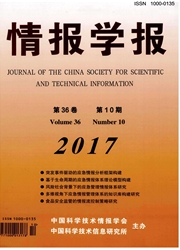

 中文摘要:
中文摘要:
首先对知识超网络的要素及其构成进行论述,根据知识超网络中要素及其关联边的不同将知识超网络划分为七种子网络,包括知识网络、主体网络和载体网络三类主体子网络以及知识一主体网络、知识一载体网络、主体一载体网络和全网络四类衍生子网络,对它们进行具体的定义和描述,并分析知识超网络的特征。在此基础上结合本体推理、模糊匹配等方法和技术,提出基于知识超网络的知识协同共建的方法,该方法利用语义匹配技术发现主体网络、载体网络和主体-载体网络等不同子网络中存在的关联信息,由此映射出相关的知识网络,从而为知识主体提供知识。据此构建基于知识超网络的组织知识协同共建平台,并展开实验研究,结果表明提出的方法与模型具有合理性和可行性。
 英文摘要:
英文摘要:
First the components and elements of organizational knowledge super-network are discussed, based on which the knowledge super-network is divided into three agent sub-networks of the knowledge network, the knowledge agent network and the knowledge carrier network, as well as four derived sub-networks of the knowledge-agent network, the knowledge-carrier network, the agent-carrier network and the whole network. Then the definitions and descriptions of these sub-networks are presented in detail, and the characteristics of knowledge super-network are also analyzed. Next approaches and models for collaborative knowledge creation from knowledge super-network perspectives are proposed based on ontology reasoning and fuzzy matching technologies, in which semantic matching techniques are used to show the related information among different sub-networks of the knowledge agent network, the carrier network and the agent-carrier network, thus to map out the relevant knowledge networks and to provide knowledge for the knowledge agents. Finally an organizational knowledge collaborative creation platform is built, and experimental studies are carried out to show the validity and feasibility of the proposed models and approaches.
 同期刊论文项目
同期刊论文项目
 同项目期刊论文
同项目期刊论文
 An information integration modelling architecture for product family lifecycle in mass customization
An information integration modelling architecture for product family lifecycle in mass customization 期刊信息
期刊信息
